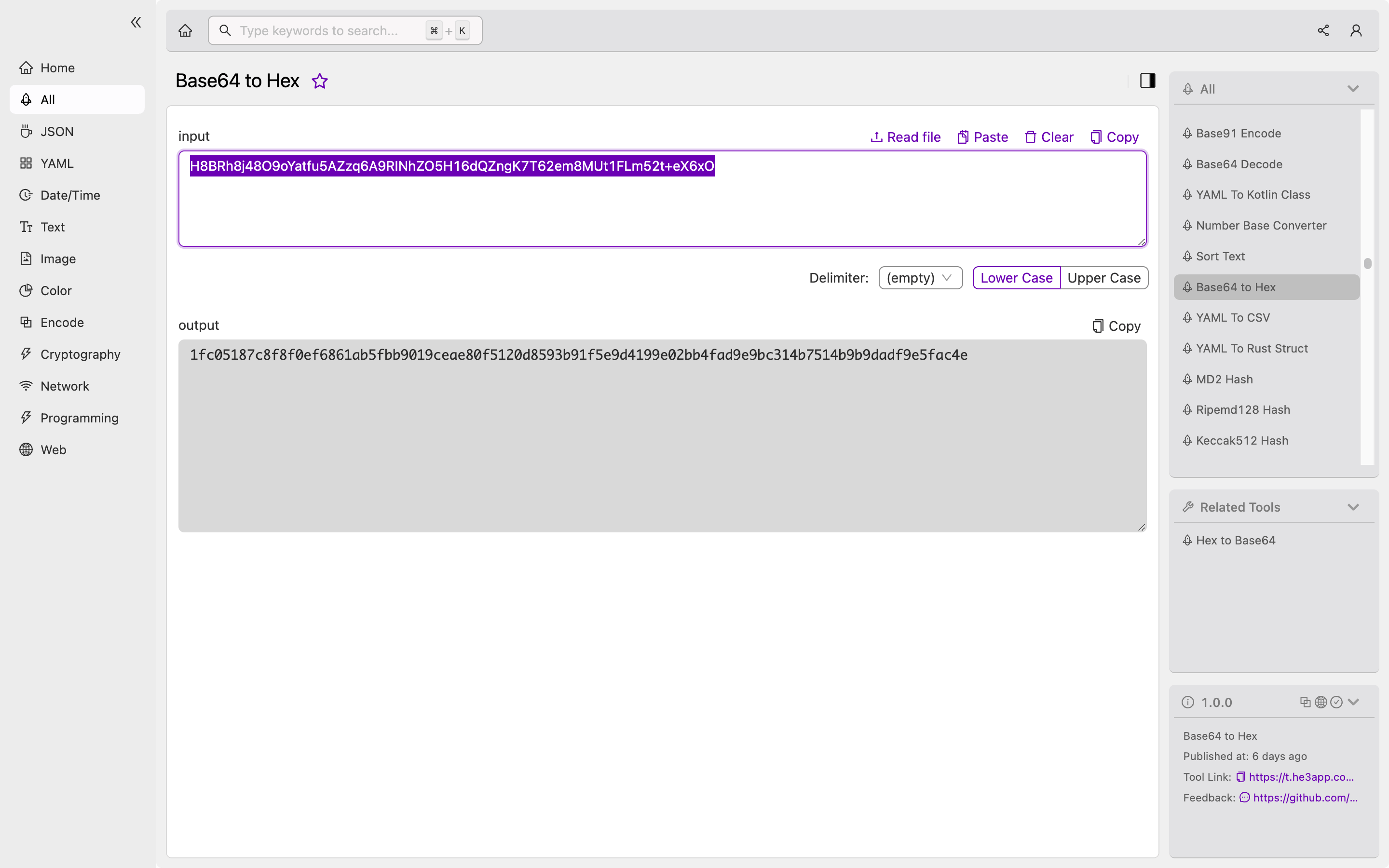Base64 to Hex: A Conversion Guide for Developers
When working with data that needs to be transferred or stored, developers often need to encode it in a way that is both compact and secure. Base64 and Hex are two such encodings that have been widely adopted in software applications. While Base64 is a popular encoding for transmitting binary data over networks, Hex is often used for representing data in a human-readable format. In this article, we will discuss how to convert Base64 to Hex and vice versa.
How Base64 to Hex Conversion Works
Base64 is a binary-to-text encoding scheme that represents binary data in an ASCII string format. The encoded data is represented using 64 characters that are chosen from the ASCII character set. Hex, on the other hand, is a numerical representation of binary data that uses two hexadecimal digits to represent each byte of data. In other words, each byte of data is represented by two digits of the hexadecimal number system.
To convert Base64 to Hex, we need to first decode the Base64 string into its binary form and then convert it to Hex. Conversely, to convert Hex to Base64, we need to first convert the Hex string to its binary form and then encode it in Base64.
Scenarios for Base64 to Hex Conversion
There are several scenarios in which developers may need to convert Base64 to Hex or vice versa. Some common examples include:
- When transferring sensitive data over the network, such as login credentials or credit card information, it is often necessary to encode the data in a way that is both compact and secure. In such cases, developers can use Base64 to encode the data and then convert it to Hex for better readability.
- When storing binary data in a database or file, developers may need to convert it to a human-readable format such as Hex. This can be useful for debugging purposes or for generating reports.
- When working with cryptographic functions that require hexadecimal input, such as SHA-1 or MD5, developers may need to convert Base64-encoded data to Hex.
Base64 to Hex Conversion in Code
The following code snippet demonstrates how to convert a Base64 string to Hex in Python:
import base64
base64_string = "SGVsbG8gV29ybGQh"
binary_string = base64.b64decode(base64_string)
hex_string = binary_string.hex()
print(hex_string)
# Output: 48656c6c6f20576f726c6421And here’s how to convert a Hex string to Base64:
import base64
hex_string = "48656c6c6f20576f726c6421"
binary_string = bytes.fromhex(hex_string)
base64_string = base64.b64encode(binary_string).decode('utf-8')
print(base64_string)
# Output: SGVsbG8gV29ybGQhOr you can use Base64 to Hex tool in He3 Toolbox, easily.

Key Features of Base64 and Hex
| Encoding | Key Features |
|---|---|
| Base64 | - Uses 64 characters to represent binary data - Commonly used for transmitting binary data over networks - Produces longer output compared to the input |
| Hex | - Uses two hexadecimal digits to represent each byte of data - Commonly used for representing binary data in a human-readable format - Produces shorter output compared to Base64 |
Misconceptions and FAQs
Is Base64 a form of encryption?
No, Base64 is not a form of encryption. Rather, it is a binary-to-text encoding scheme that converts binary data into a string of ASCII characters.
Is Hex more secure than Base64?
No, Hex and Base64 are just two different ways of representing binary data. Neither one is inherently more secure than the other. However, Base64 is often used for transmitting binary data over networks because it produces shorter output compared to Hex.
Overall, Base64 and Hex are both useful encodings that have unique strengths and weaknesses. By understanding how to convert between them, developers can choose the right encoding for their specific use case and optimize the efficiency and security of their applications.
